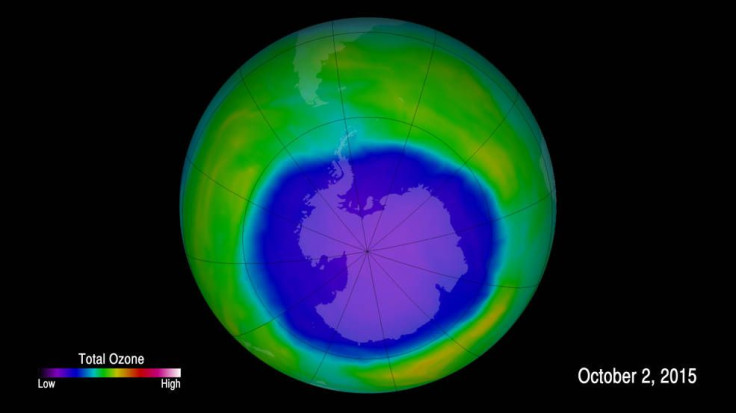Success In The Sky: Global Efforts Lead To Slow But Definite Ozone Healing
KEY POINTS
- Scientific assessment made every four years highlighted the progress in ozone recovery
- The global average amount of ozone 18 miles up in the atmosphere will return to its 1980 pre-thinning levels by 2040
- Chlorine and bromine cause the most damage to the ozone layer and are in lower levels in the atmosphere
A recent report by the United Nations has revealed that the Earth's ozone hole is slowly healing, validating the combined global efforts of more than 35 years.
The scientific assessment that takes place every four years highlighted the progress in ozone hole recovery. This is a clear indication of the success of the agreement every nation in the world made to stop producing chemicals that eat away the ozone layer, which protects humans from harmful solar radiation associated with skin cancer, cataracts, and crop damage.
"In the upper stratosphere and in the ozone hole we see things getting better," said Paul Newman, a co-chair of the scientific assessment, reported PhysOrg.
The report, presented Monday at the American Meteorological Society convention in Denver, added that the progress was slow.
After thorough analysis, the report stated that the global average amount of ozone 18 miles up in the atmosphere will return to its 1980 pre-thinning levels by 2040. And in the Arctic, we will have to wait until 2045 to see the same results.
The notoriously thin, gaping hole in the ozone layer over Antarctica won't be fully fixed until 2066, the report further said.
Chlorine and bromine — the two main chemicals that cause the most damage to the ozone layer are in lower levels in the atmosphere. Chlorine reduced by 11.5% since its 1993 peak levels and bromine, which is more damaging of the two, dropped to 14.5% since its 1999 peak, the report found.
The fact that these two chemicals "stopped growing and is coming down is a real testament to the effectiveness of the Montreal Protocol," Newman said.
The Montreal Protocol was an agreement made in 1987 prohibiting certain ozone-depleting chemicals often used in refrigerants and aerosols. To commemorate the event, the UN celebrates World Ozone Day every year on Sept 16.
"On this thirty-fifth anniversary, we will remember how the Montreal Protocol ended one of the biggest threats ever to face humanity: the depletion of the ozone layer," the UN said in a statement on world ozone day last year. "When the world found out that man-made chemicals used in aerosol sprays and cooling were creating a hole in the sky, they came together."
"There has been a sea change in the way our society deals with ozone-depleting substances," scientific panel co-chair David W. Fahey, director of the U.S. National Oceanic and Atmospheric Administration's chemical sciences lab, noted.
"Ozone action sets a precedent for climate action. Our success in phasing out ozone-eating chemicals shows us what can and must be done—as a matter of urgency—to transition away from fossil fuels, reduce greenhouse gases and so limit temperature increase," World Meteorological Organization Secretary-General Prof. Petteri Taalas said in a statement, as per the outlet.
Also, the report cautioned that plans to artificially cool the planet by adding aerosols into the atmosphere would thin the ozone layer by around 20% in Antarctica.

© Copyright IBTimes 2024. All rights reserved.




















